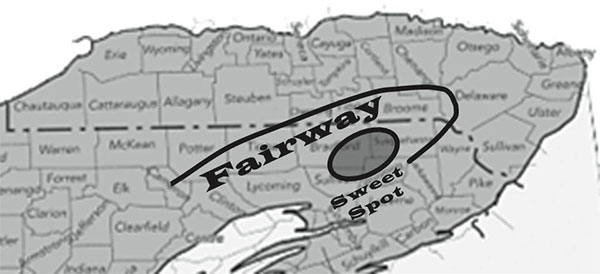by Jerry Acton and Brian Brock
Future production of shale gas from Marcellus wells in New York has been hyped by industry lobbyists, leasing coalitions, and the Division of Mineral Resources (DMN). In reality, the producing region would be small and production modest.
Four features of the shale largely control gas production within the Marcellus: organic content, maximum temperature, thickness, and depth.
For shale gas to have been created, there must have been source material and it must have been heated enough – but not too much.
As shale is heated, organic matter breaks down to kerogen, kerogen to oil, oil to methane, and finally methane to carbon dioxide and water.
For most of the Southern Tier, the Marcellus had enough organic matter to create gas and was heated enough to yield methane. However, beneath the Catskills and some surrounding regions, the shale is barren and over-cooked.
For there to be enough gas to be profitably produced, the shale layer must be thick enough and deep enough.
Where the shale is thickest, there is the most rock to drain gas from. Where the shale is deepest, the most gas is squeezed into the natural spaces. Also, the maximum difference in pressure is there (between the rock and the well) to push the gas out of the shale.
Just across the border in Pennsylvania, thousands of horizontal shale wells have been drilled during the last few years. Results in PA’s Northern Tier can tell us about the prospects for gas production here in the Southern Tier.
We compared production in each town with the underlying geology of the Marcellus Shale. Production is greatest in the “sweet spot,” where the counties of Susquehanna, Bradford, and Wyoming meet. There the shale layer is thick and deep.

Away from the sweet spot, production drops off sharply as the shale layer thins and shallows. Production depends on the volume of shale fracked, which decreases with the square of the thickness. Production also depends on the depth of shale, and falls to zero as the shale layer reaches the surface where the pressure is zero.
For example, the shale in Franklin is a third as thick as in the sweet spot (100’ vs. 300’), meaning there is one ninth the volume of rock to be fracked. In addition, the shale layer here is half as deep as in the sweet spot (3,500’ vs. 7,000’), meaning pressure differential is half as great. The result is that production in Franklin would be one eighteenth (1/9 x 1/2) of that in the sweet spot, i.e. only five percent.
Looking at the whole of the Southern Tier, production would be comparatively low in the vast majority of towns. Drilling would be most profitable in the border towns of Broome and Delaware counties. As you would expect, recent applications for five drilling permits by XTO (a subsidiary of Exxon) are for the adjacent towns of Sanford, in Broome County and Deposit, in Delaware County.
Should gas prices rise, we expect that the fairway for drilling (i.e. where drilling would be profitable) would expand further into the border towns of Chemung and Tioga counties, as well as to additional towns in Broome and Delaware.
These results should not come as a surprise because academia and industry have been forecasting fairways of a similar extent since the Marcellus boom began. However, in the Supplemental Generic Environmental Impact Statement, the DMN has spread confusion by depicting the Marcellus fairway as including the whole of the eastern half of the Southern Tier, all the way to where the shale breaks the surface in visible outcroppings.
A low potential for production does not guarantee that there will be no drilling in a county. Small operators are incurable optimists. In the Northern Tier of Pennsylvania, counties with low potential such as Potter and McKean now have dozens of horizontal wells – despite every well being a low producer.
Costs of drilling could be substantial to people and towns. But outside of the fairways, the benefits of drilling from royalties could be meager. The only way a town can guarantee control of the costs of drilling is by exercising its home rule powers through local zoning.
State-wide comprehensive regulation, rigorously enforced, could reduce costs – although not eliminate them. But after five years of moratorium, we are no closer to either. Regulations were proposed and then dropped. (The DMN is operating with regulations codified in the 1970s, with none resulting from the GEIS.)
The governor’s Advisory Committee on Hydraulic Fracturing, which is to plan for the practical details of financing and staffing, has not met in almost two years. And while the industry talks of “safe and responsible drilling,” it works relentlessly to avoid safe regulations and taking responsibility for the consequences of its actions.
